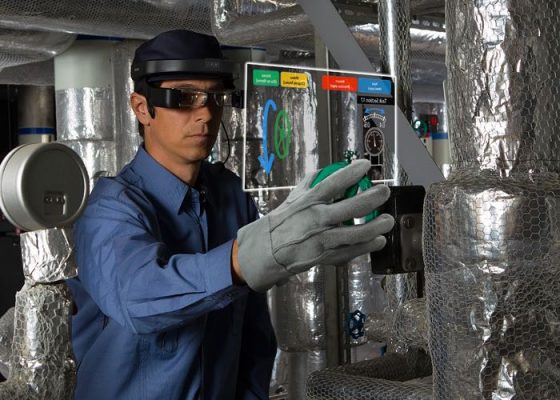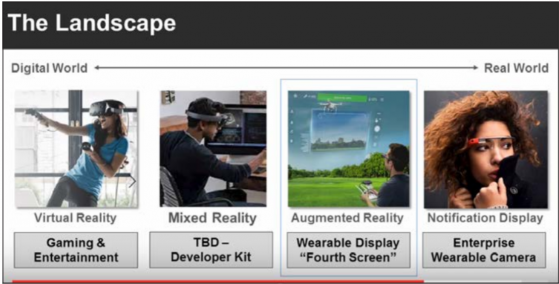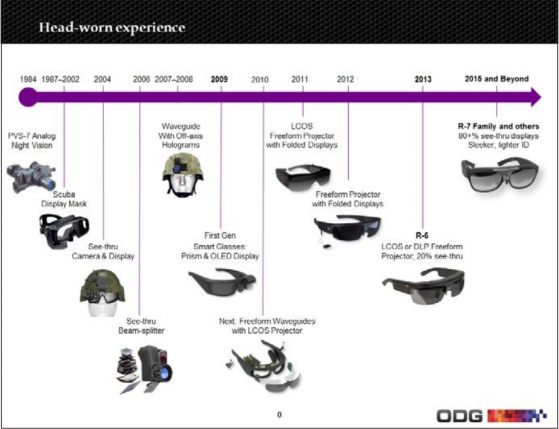Two new AR glasses are aimed at consumers and enterprise users.
Relatively speaking, Epson is an early mover in augmented reality (AR). Their glasses technology comes from long-time work in projectors, and as a result, they enjoy a leading position in the market. Epson’s new ventures manager Eric Mizufuka says the company has built their headsets based on customer feedback through several product generations. The company says they have products for every market segment: consumer, commercial, and enterprise. At Augmented World Expo (AWE) recently, the company had two headsets to show off: the BT-2000 for enterprise and the BT-300 for commercial applications. These products have grown out of the company’s BT-100, introduced in 2011, and the BT-200, which was introduced in 2014. Each headset has helped give Epson an important foothold up the rungs of the AR food chain. We were told that it takes about a year for an AR product to find its place in the market after introduction, which seems pretty good for a nascent market that usually requires quite a bit of DIY from its customers.

At AWE 2016, Epson highlighted its play for the hobbyist market. Mizufuka said the company is doing a nice business in conjunction with the drone business. People are using AR glasses to watch their drones and control them. Mizufuka said Epson sees a future in “the fourth screen.” He explained that the first screen is TV; the second is the PC, which brings connectivity; the third is mobile; and the fourth is AR. AR solves the major drawback of mobile—which is that you’re holding the device and looking down at it. Instead, said Mizufuka, AR is heads-up and hands-free

Enterprise AR
The BT-2000 has been developed to allow wearers to tolerate it for all-day wearing. The glasses can be flipped up out of the way when not needed. It’s waterproof and ruggedized. The BT-200 and the BT-300 have been designed for the commercial market. Essentially, the BT-2000 is a ruggedized version of the BT-200, and so it’s likely there could be a similar enterprise version of the BT-300.
Unlike the ill-fated Google Glass, the Moverio glasses put the images in front of the eye with micro-projectors, enabling sharp, clear digital overlays on the real world, which can be seen through the glasses. For the purposes of reckoning, the BT-2000 is priced at $2,999, and the BT-200 comes in at $699. Epson isn’t ready to reveal the price of the BT-300, but it is designed to succeed the BT-200 so the price will be in that range.

One of the primary usage models for AR glasses today is worker assistance, and that was the most common usage we saw being demonstrated at AWE. Users may access an app that helps them get through a process with detailed instructions, or they may get additional help from someone working remotely who can talk people through a task. Other segments Moverio is seeing for their products are health care, art and culture, and retail.





